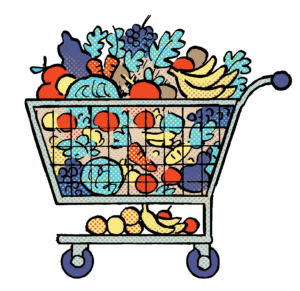By Søren H. Dinesen, CEO and founder of Digiseg
If you are Gen X or (gasp!) a boomer, you remember a time when listening to the new hit song at home meant buying the whole album. Getting what you wanted required paying for a bunch of stuff you didn’t: the other ten songs on the record.
Enter Spotify. Queue up almost any track you want for free or a small fee. Get what you want; skip the waste. Album sales have disintegrated. The Swedish streaming company not only changed the music business, but music itself.
Another simple piece of technology – the humble browser cookie – transformed an entire industry almost as quickly as Spotify changed music. The cookie provided advertisers a level of insight they never had. By promising they could pay for exactly what they wanted (their target audience) and skip the waste, the cookie enabled billions of marketing $, € and £ to move online.
Whereas big brands once relied on PhDs to apply econometric wizardry, while mom-and-pop shops relied on instinct, the third-party cookie leveled the playing field, bringing the dream of truly measuring advertising effectiveness within reach for all.
The cookie never lived up to its promise
As most of us know, the dream promised by cookies became a Wanamaker-ian nightmare – or at least a Wanamaker-ian mirage. Calculating ROAS required painstakingly counting and de-duping last clicks. The promise of laser-guided, one-to-one targeting never quite lived up to the hype. The intended audiences remained elusive, and big brands were famously skeptical.
Moreover, we’ve all experienced the annoyance of continually being retargeted after completing a purchase. If brands can’t figure out that the customer has already made the purchase, how personalized can the marketing really be?
The cookie was supposed to reveal which 50% of advertising spend was being wasted. But its biggest contribution might be complicated dashboards.
With cookies about to become a historical footnote, will anyone really miss third-party audience segments? Or miss relying on third-party data as a measure of marketing effectiveness? Cookies were always inadequate as a proxy for identity and as a method of attribution.
Digital as mass media
All the focus on “cookie-free” tracking, targeting and attribution frames the issue in the wrong way. This transition should not be, as Joanna O’Connell of Forrester puts it, “a find-replace moment.” We should not simply substitute one solution and paradigm for a new solution in service of the same paradigm. There is a demand for real privacy and meaningful anonymity – not just cookie redux. We have a real opportunity to make changes that benefit both consumers and advertisers.
Targeting and measurement existed long before digital and cookies. The first TV ad came into homes in 1941. TV reigned for 53 years before the first banner ad hit desktop screens in 1994. TV remains the gold standard for targeted delivery because it combines context with reach. It is probabilistic, conceding a bit of precision by using content as a proxy for identity, but it compensates by providing unmatched reach.
This combination is the power of mass media, and this is where digital needs to shift as cookies disappear. We need to let go of our cookie-driven, deterministic dream and start imagining targeting without identity.
It is possible. Here are two methods pointing us toward the mass media future right now:
- Contextual targeting: This is the same basic model as TV. While the cookie reigned, it felt archaic and had limited adoption. But savvy thinkers are seeing context in a new light – a solid segmentation method that’s inherently anonymous, with reach challenges that can be solved with the right approach.
- Offline demographic data: Our TV ancestors used panels to approximate this method, but they could never achieve the precision of digital. More recently, this data has been clumsily activated using zip codes – a less-than-ideal approach which has limited its appeal. But with modern modeling and methodology, entire countries can be segmented into neighborhoods of as few as 100 households. It’s how TV would have done it if they’d had digital instead of broadcast. It is inherently anonymous, with the ideal blend of reach and precision.
What’s old is new again
What feels like transformative change in the moment often looks more like the swing of a pendulum through the long lens of history.
In music, the album format had a good run until Spotify arrived and everyone started listening to singles. But what was the dominant format before the album came along? The single.
Likewise, the third-party cookie has had a good run. But despite feeling like a tectonic shift in the ad world, the reality is that the “cookieless future” may look a lot like the mass media model that dominated for more than half a century before digital. Don’t remember? Ask a boomer. They’ll tell you.















